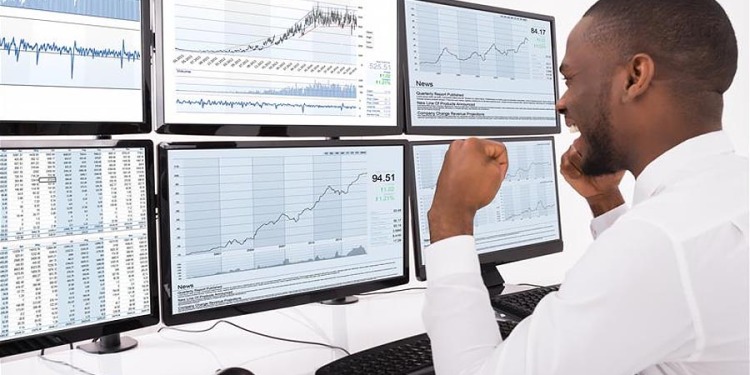
Anywhere

As national economies are still grappling with the pandemic, Forex brokers give
everyone a chance to make money online. Trading is not rocket science, but it
requires skills, knowledge, and persistence. Successful traders can work from
any part of the world using their laptops, tablets, or even smartphones. If this is
your idea of a perfect life, read on!
Currently, over 300,000 people in Nigeria partake in trading online. Brokers give
access to a plethora of instruments, from currencies to CFDs. Education is free,
and YouTube is packed with tutorials. Yet, only some users manage to become
nomads. What sets them apart?
Getting Started
While anyone can learn forex, this market has its “bad apples” — companies
posing as brokers. Your first step is finding a licensed provider authorized by
regulators like the FCA in the UK, CySEC in Cyprus, or the FSCA in South
Africa. Your broker is more than an access provider. Apart from unlocking the
global markets, it will also manage transactions, so make sure the firm is legit.
Some global brands have been in business for over a decade. They provide the
full package: demo and live accounts, transactions, support, and education. The
latter includes articles, tutorials, videos, and more.
Education: Key Components
● Install the software
A Forex trading terminal is an all-inclusive environment for virtual trades. There
are charts with different time frames, technical indicators, financial news,
economic calendars, and the dashboard for opening and closing positions.
Some companies invest in their own apps and desktop tools. Others stick to
generic packages like MetaTrader 4 and or MetaTrader 5.
A digital nomad needs cross-platform solutions. Apps for iOS and Android,
software for laptops and web-based terminals connect to the same cloud-based
servers, so you can switch between devices seamlessly. Forextime, which
serves millions of clients in 150+ countries, provides the full arsenal.
● Register a demo account
Demo trading is usually free and unlimited. It is your opportunity to explore the
terminal, get familiar with its features and test popular strategies safely. No
deposit is required. If a broker requires investment from the get-go, this is a red
flag.
● Choose first instruments
Many traders start with Forex, although brokers offer a variety of other
instruments. Currencies are intuitively understandable, as an exchange is an
inherent part of travelling and global trade. Gradually, you will be able to add
more assets and form a diversified portfolio — the key condition for lasting
success.
● Learn about popular strategies
Use the beginner’s library on https://www.forextime.com/education/forex-trading-
for-beginners to grasp the basics. Some strategies are more stressful than
others, as trading is more intense. In scalping, positions remain open for minutes
or even seconds, as the focus is on the shortest price movements. A swing
trader could be content with a couple of trades per week. In day trading, all
positions are opened and closed within the same day.
None of the strategies guarantees results, so choose the most convenient one.
Apply different styles to demo trades to build your skillset. The terminal will
simulate real market conditions.
Make the most of the broker’s educational library and use external sources.
YouTube has a plethora of tutorials for any style and instrument. Not all of them
are trustworthy, but some channels are run by distinguished experts (for
example, Warrior Trading).
● Hone your analytical skills
A trader may use technical analysis, fundamental analysis, or both. The first
methodology involves technical indicators like moving averages and Bollinger
bands. They help users identify trends and predict reversals. They look for
patterns like Flag or Wedge to identify bullish and bearish sentiments.
Fundamental traders zoom in on the economic and political factors affecting their
instruments. Every currency pair is priced based on the state of the two
economies. It may be affected by geopolitics, changes in GDP and inflation,
interest rates of central banks, unemployment figures, and other trends.
Connecting to the Live Market
After gaining initial experience, switch from the demo to a live account. Start
small and manage risks rigorously. Limit volume to 1% of capital per trade, use
Stop Loss and Take Profit for every position. Avoid leverage in the beginning, as
it exacerbates the risks.
Every decision in the global markets must be rational. Stay the course and work
mindfully to achieve a tidy profit. Good luck!
Want To Promote Your Song?



